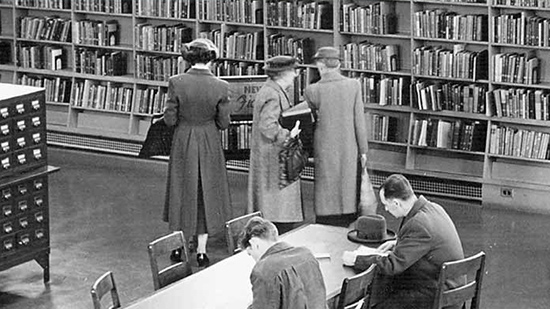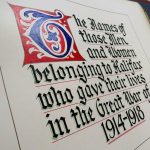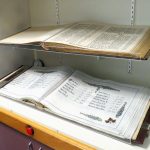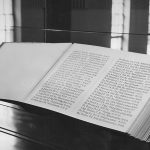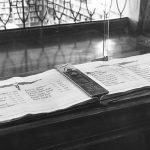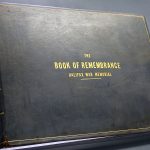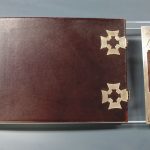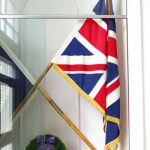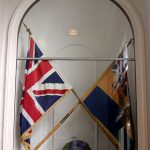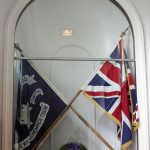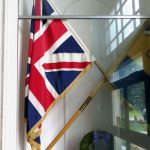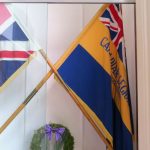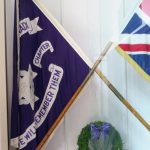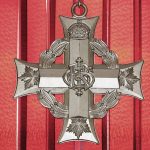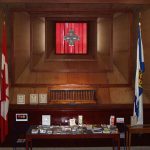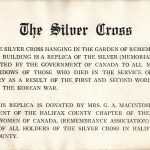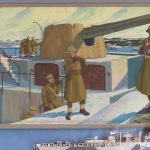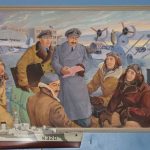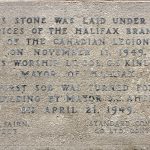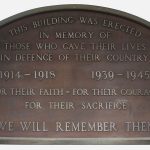In 1951, when we opened our first branch, the Spring Garden Road Memorial Library, the community was still recovering from the effects of 2 world wars.
Feeling that a statue or fixed memorial was not enough, community members rallied around the idea of creating a living memorial—a public library, open to all. A public institution promoting freedom of speech was seen as a fitting honour for those who lost their lives defending these very ideals.
When the time came to move to a facility that better met the needs of the community, we worked closely with the Royal Canadian Legion to preserve the rich history and memorial legacy of the Library.
Memorial artifacts
Books of Remembrance
The Spring Garden Road Memorial Library housed 2 hand-made Books of Remembrance listing the names of the men and women of Halifax County who perished in World War 1, World War 2, and the Korean War. Both of these remain with the Library, and are proudly displayed on the 4th floor of Central Library, along with a third Book of Remembrance that memorializes local men and women who have died in subsequent conflicts. The Books of Remembrance can also be viewed online.
Flags and Standards
Flags and standards were displayed in a pair of glass cases inside the Library's main entrance. One case contained a Union Jack and the British Empire Service League flag. The other case housed the 2 standards of the Silver Cross Women of Canada.
See the flags and standards at the Maritime Command Museum, opens a new window.
Silver Cross
The Silver Cross which hung in the Library is a replica of the Silver Cross presented by the Government of Canada to all mothers and widows of those who died in the service of their country during World War 1, World War 2, and the Korean War. It was donated to the Library in 1950 by Mrs. G. A. MacIntosh, first president of the Halifax County Chapter of the Silver Cross Women of Canada. Its original home in the Library was in the indoor Garden of Remembrance.
See the Silver Cross at the Maritime Command Museum, opens a new window.
Murals
In 1951, 3 murals depicting the role of servicemen during the war years were commissioned and painted by local artist Commander Donald Cameron MacKay. Commander MacKay was the principal of the Nova Scotia College of Art and had served in the Royal Canadian Navy, for part of his 6 years as a war artist. The murals were exhibited in the Library for many years until they were donated to the Maritime Command Museum, opens a new window in 1974.
The Building
In addition to the memorial artifacts that were displayed in the Spring Garden Road Memorial Library, the building incorporates important memorial features, still there today. The building is owned by the Halifax Regional Municipality, which will be exploring how best to honour the history of the site in the redevelopment plans.
Cornerstone
Mayor Gordon S. Kinley laid the cornerstone following a service at the Cenotaph on November 11, 1949. Hundreds of veterans and citizens crowded Grafton Park that day to be a part of the ceremony. The cornerstone reads:
“This stone was laid under the auspices of the Halifax Branches of the Canadian Legion on November 11, 1949 by His Worship Lt. Col. GS Kinley, VD, Mayor of Halifax. The sod was turned for this building by Mayor JE Ahern on April 21, 1949.”
Plaque
A bronze plaque with aluminum fittings designed by Alderman A.H. MacMillan. The plaque reads:
“This building was erected in memory of those who gave their lives in defense of their country 1914-1918 1939-1945. For their faith – for their courage – for their sacrifice, we will remember them.”
Learn more
- Visit the 'A Living Memorial' website, opens a new window to learn about the rich history of the Spring Garden Road Memorial Library, access archival documents, read newspaper clippings, see pictures, and more.
- Visit the Halifax Central Library website to learn more about the plans to transition the memorial, which were developed in consultation with the Nova Scotia/Nunavut Command and The Royal Canadian Legion.

